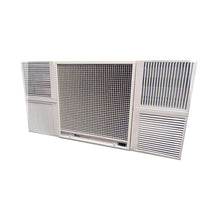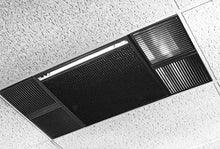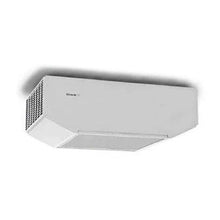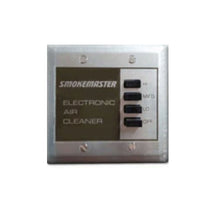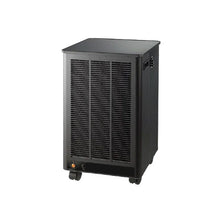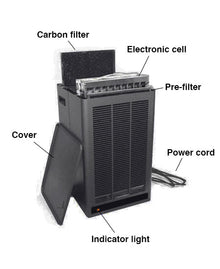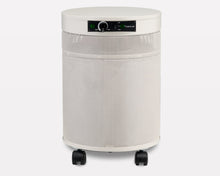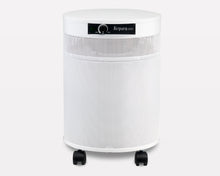Hookah Lounge Air Quality: Creating a Refreshing Environment with Advanced Air Purifiers

Stepping into a well-run hookah lounge should be an experience of rich aromas, relaxed conversation, and a welcoming atmosphere. However, for both owners and patrons, the reality can often be a hazy, smoke-filled space that lingers in clothing and hair long after a visit. This isn't just an aesthetic issue—it's a critical concern for comfort, customer retention, and long-term health. The very essence of a great shisha bar hinges on the quality of its air, yet many businesses struggle to find a solution that effectively manages the unique challenges posed by hookah smoke.
The pervasive haze and stale odors are not merely an inconvenience; they are a sign of a significant air quality problem. Hookah smoke, while often perceived as less harmful than cigarette smoke due to its water filtration, is a complex mixture of fine particulate matter, carbon monoxide, and other harmful compounds. A study published in the journal Environmental Health Perspectives highlights that indoor air quality in hookah lounges can be profoundly poor, with some venues showing levels of fine particulate matter () ranging from "unhealthy" to "hazardous" by EPA standards. These tiny particles, smaller than 2.5 micrometers, can penetrate deep into the lungs and even enter the bloodstream, posing serious health risks to both patrons and employees. The burning charcoal used to heat the shisha further contributes to the problem, releasing carbon monoxide and other volatile organic compounds (VOCs) that can cause headaches, dizziness, and long-term respiratory issues.
Understanding the specific nature of hookah smoke is the first step toward a genuine solution. Unlike a single cigarette, a typical hookah session can last for an hour or more, generating a massive volume of smoke. The Centers for Disease Control and Prevention (CDC) notes that a single hookah session exposes a user to up to 200 times the smoke volume of a single cigarette. This heavy, continuous output of smoke creates a demanding environment for any air purification system. The challenge is twofold: you must effectively capture and remove both the solid particulate matter and the gaseous pollutants responsible for the strong, lingering odors. Traditional ventilation that simply circulates air is often insufficient. It might move the smoke around, but it doesn't eliminate the microscopic particles and gasses that truly degrade the air quality and the overall customer experience. This is where a targeted, advanced air purification strategy becomes not just a benefit, but a necessity for any modern hookah lounge.
When we at Commercial Air Purifiers, LLC approach a business with these challenges, our focus is on providing a comprehensive, data-driven strategy rather than just selling a piece of equipment. We've learned from our experience that the right solution is a multi-layered one that targets the full spectrum of pollutants found in a shisha bar. Simply having a filter isn't enough; you need the right combination of technologies working in tandem. The core of any effective hookah lounge air purifier must include high-efficiency filtration for particles and robust absorption for odors.
The foundation of this system is a high-efficiency particulate air (HEPA) filter. A true HEPA filter is designed to capture 99.97% of airborne particles as small as 0.3 microns. While some smoke particles are smaller than this, HEPA filters are remarkably effective at trapping the majority of the fine particulate matter from hookah smoke, including ash and tar. To handle the dense volume of smoke, the HEPA filter must be substantial and paired with a powerful fan to achieve a high Clean Air Delivery Rate (CADR). This is the key metric that tells you how quickly a purifier can clean a room of a specific pollutant, and for a commercial setting, a high CADR is non-negotiable. Without it, the purifier will be constantly fighting a losing battle against the continuous output of smoke. We have seen firsthand how a system with an undersized fan and a standard filter simply gets overwhelmed, leading to rapid filter saturation and minimal improvement in air quality.
Beyond the particulate matter, the signature odors of a shisha bar are caused by volatile organic compounds (VOCs). These gaseous pollutants cannot be captured by a HEPA filter alone. This is where activated carbon filtration becomes an indispensable component. Activated carbon is a highly porous material with a massive surface area that acts like a sponge, adsorbing gaseous molecules and trapping them within its structure. The more activated carbon a system has, the more effective it will be at neutralizing those strong, lingering smells. A commercial-grade smoke eater for a hookah lounge must have a generously sized activated carbon filter to handle the heavy load of odors from both the flavored tobacco and the burning charcoal. The combination of a pre-filter to catch large debris, a deep-bed activated carbon filter for odors, and a true HEPA filter for fine particles creates a powerful, three-stage defense against the unique air quality challenges of these environments.
The conversation about air quality isn't just about filters; it's about the entire ecosystem of a business. A study from the World Health Organization (WHO) has shown that improving indoor air quality can directly lead to better health outcomes for both employees and customers, which in turn can lead to reduced sick days and increased customer dwell time. In a competitive market, a truly refreshing and clean environment can become a significant point of differentiation. For many patrons, the decision to visit a hookah lounge is influenced by the comfort of the space, and a haze-free, odor-controlled environment can be the difference between a one-time visit and a loyal, repeat customer. We have heard from lounge owners that investing in advanced air purifiers has not only improved the atmosphere for their guests but has also made their staff's work environment safer and more pleasant. This positive change often translates into better service, lower staff turnover, and ultimately, a more profitable business.
For a hookah lounge owner looking to make an immediate impact, we at Commercial Air Purifiers, LLC recommend a few key actions. First, start with a professional assessment of your space. The right solution is never one-size-fits-all. Factors such as square footage, ceiling height, existing ventilation, and the average number of hookahs in use at any given time will all influence the type and number of units required. A single, powerful commercial air purifier might suffice for a smaller space, while a larger, open-plan lounge may require multiple ceiling-mounted units strategically placed for optimal air circulation.
Secondly, invest in a system designed specifically to be a commercial smoke eater. A residential air purifier, even a large one, is simply not built to handle the heavy, continuous smoke load of a commercial establishment. Look for units that feature a multi-stage filtration system with a true HEPA filter and a substantial amount of activated carbon. Look for a high CADR rating for smoke to ensure rapid and effective air turnover. Some advanced systems also include electrostatic precipitators, which use an electrical charge to capture particles, and UV-C light to inactivate airborne viruses and bacteria, adding another layer of purification.
Finally, prioritize a system that is durable and easy to maintain. Commercial environments are demanding, and you need equipment that can operate continuously with minimal fuss. Long-lasting, high-capacity filters reduce the frequency of replacements, saving you time and money in the long run. We believe in providing solutions that are not only effective but also practical for daily business operations. The goal is to provide a comprehensive solution that allows you to focus on your customers and your business, confident that the air quality is taken care of.
The air quality in a hookah lounge is not a luxury; it's a fundamental element of the customer experience and the health of everyone in the space. The issue extends far beyond just ventilation; it requires a targeted, science-backed approach. By understanding the unique composition of hookah smoke and investing in a specialized air purification system, business owners can transform their environment from a hazy room into a truly refreshing destination. The best hookah lounges are those that prioritize the comfort and well-being of their patrons and staff, and a commitment to superior air quality is one of the most powerful ways to demonstrate that priority. By creating a cleaner, healthier, and more inviting space, you can enhance your brand, build customer loyalty, and ensure the long-term success of your business.
FAQs
What is the primary pollutant in hookah smoke that air purifiers need to address?
The primary concern is fine particulate matter (PM2.5), which are microscopic particles that can be easily inhaled and cause health problems. Effective air purifiers must also address carbon monoxide and a wide range of volatile organic compounds (VOCs) that cause odors and other health issues.
Can a regular HEPA air purifier handle a hookah lounge?
A standard residential or office HEPA air purifier is typically not sufficient. It may capture some particles, but it lacks the necessary power (high CFM/CADR), and more importantly, the large amount of activated carbon needed to effectively neutralize the heavy smoke and odors generated in a commercial hookah lounge.
How often do filters need to be replaced in a commercial air purifier for a hookah lounge?
Filter replacement frequency depends on the specific model and the volume of smoke in the lounge. A high-capacity system designed for this environment will have more durable filters that last longer, but a busy lounge will require more frequent replacements than one with less traffic. Regular maintenance, including replacing pre-filters, is crucial to extending the life of the main HEPA and carbon filters.
Is better ventilation an alternative to using a commercial air purifier?
While ventilation is important for introducing fresh air, it is not a complete solution on its own. It may help dilute some pollutants, but it does not actively filter and remove microscopic particles and gases from the air. A combination of good ventilation and a powerful commercial air purifier is the most effective strategy for maintaining superior indoor air quality.

